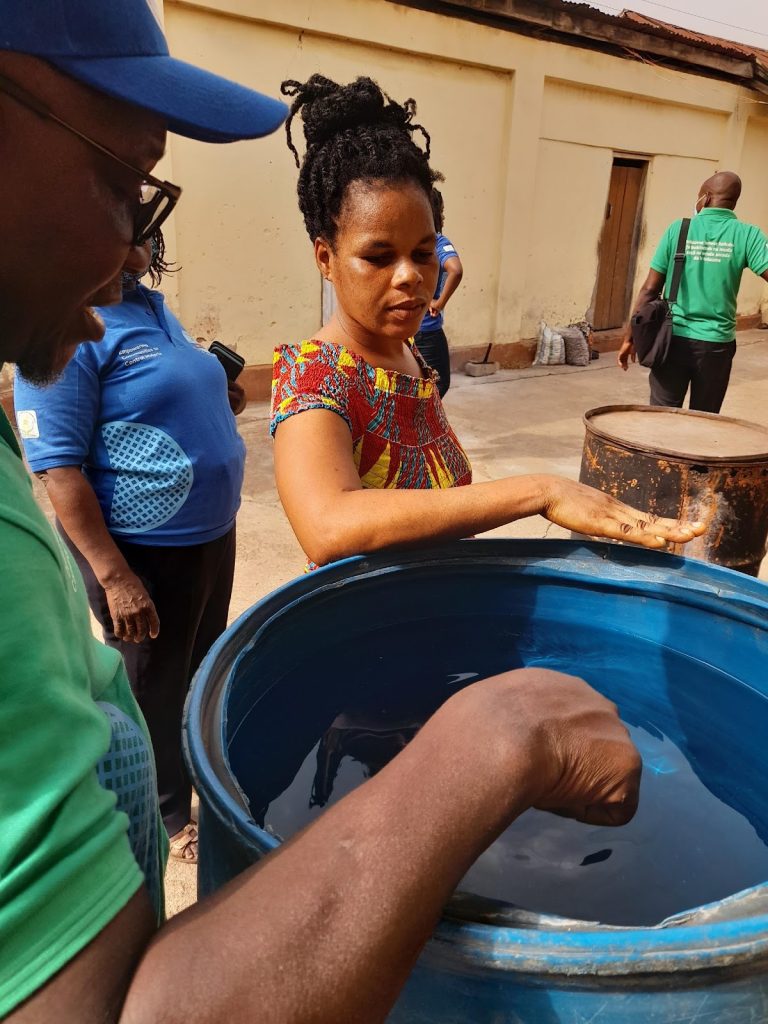Menu
A stakeholder and community-based intervention to transition the mass LLIN distribution campaigns to the Community-based Health Planning and Services (CHPS) Programme, and improve the use of LLNs in Ghana.
Study sites included six communities across two regions (Eastern and Volta) in southern Ghana
The University of Ghana and Ghana Health Service assessed LLLIN campaign implementation and identified potential enablers and barriers to determine if the Community-based Health Planning and Services Programme (CHPS) could support the implementation of mass LLIN distribution campaigns and improve the use of LLINs. An intervention called CHAT (Community Health Advocacy Team), a nine-member team of community actors, was formed to plan and lead social and behavioral change communication (SBCC) activities on regular LLIN use within communities. Key findings:

Image above: Community Health Advocacy Team (CHAT) members on home visits, creating awareness on malaria prevention and LLIN use.
See the slides for detail on the methods of the study.
Professor Phyllis Dako-Gyeke, University of Ghana, walks through the objectives, methods, lessons and policy implications.

Reflecting on lessons learned and feedback received from participants in the feasibility survey, these promising practices were developed and should be pursued in future health campaigns and integration research.
In addition, see the research brief for lessons learned and implications for policy and future research.